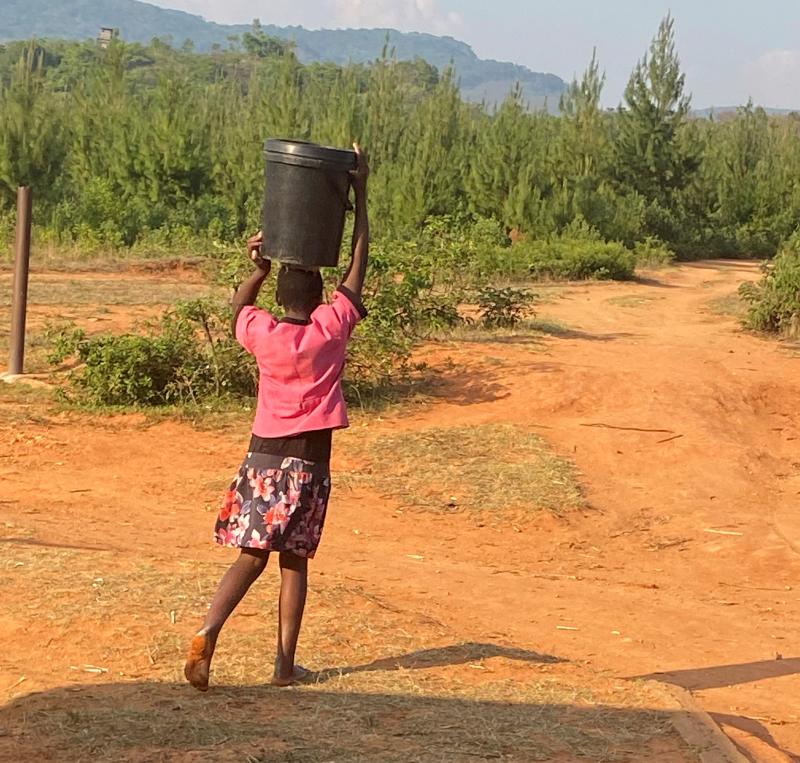Where We Work
See our interactive map


Photo by Esther Tumbare
IntraHealth’s Esther Tumbare takes a sobering look at her home country’s health system and envisions a brighter picture.
I often have this image in my mind: a young girl I saw the last time I went to my village. It’s late morning and she’s carrying a bucket of water on her head, having just drawn it from the village well. She’s just nine or ten years old, but I know it will not be long before she, or another girl she knows, will be forced into womanhood.
In Zimbabwe, 34% of girls are married before the age of 18.
The school holidays are not due for another month, so I wonder why she is not in school. I’m flooded with thoughts about the disadvantages girls here in Zimbabwe, and in many low-income settings around the world, still face. They are expected to grow up too quickly, often when they are not psychologically ready, and when their little bodies are physically not ready to carry babies.
In Zimbabwe, 34% of girls are married before the age of 18 and 5% before their 15th birthday, and almost a quarter of women ages 20-24 gave birth before they turned 18. The fertility rate stands at 3.5, and about 15% of girls and women 15-49 are living with HIV.
I have worked as a medical practitioner all my adult life. I started as a young doctor interning at Harare Central Hospital, and then my career turned to public health—which took me from thinking about how to provide the best care for that one patient sitting in front of me to thinking about the bigger picture, asking myself, “What will be my contribution toward health for all?”
All girls need access to preventive health care and information.
The girl in the picture inspires me to help all girls have access to preventive health care and information so they can grow up strong and healthy, go to school, and only settle down to family life if and when they are ready.
Providing high-quality health care requires skilled health workers, who have the skills and the tools to do their work, and who are fairly compensated and motivated to provide the best care for their patients. Zimbabwe’s public health system has suffered a tremendous exodus of critical health workers, not just to the region but to higher-income countries—doctors, midwives, nurses, laboratory technicians, all seeking better opportunities for themselves and their families. More than 4,000 health workers have left Zimbabwe since 2021.
When a country has a fragile health system, the loss of its workforce has the potential to bring the whole system to collapse, with significant consequences: people lose their lives.
Brain drain has left an already fragile health system severely strained.
In Zimbabwe, brain drain has left an already fragile health system severely strained. Girls and women have little access to health workers who can provide essential health services, such as family planning, antenatal care, or HIV prevention and treatment. Maternal mortality is high at 362 deaths per 100,000 live births, according to the 2022 Housing and Population Census, and there has been little if any improvement in child mortality in the past five years. In order to improve these and other key public health indicators, Zimbabwe must address multiple challenges, but the health workforce is the epicenter of any improvement.
The situation with Zimbabwe’s health system is dire, and without nearly enough funding available from donors, calls for a triaged and systematic approach to make the most impact toward building and supporting a productive workforce that can deliver lifesaving, people-centered care.
With smart interventions like these, we could see a different picture.
Since 1979, IntraHealth International has focused on strengthening health workers and systems to support them as essential to meeting global health needs. Just like I can see an end to HIV/AIDS, with smart interventions like these, I think we could see a different picture for girls and women in Zimbabwe:
If we take approaches like these in Zimbabwe, I can imagine a much brighter, healthier future for that little girl—and all women and girls in Zimbabwe.
Get the latest updates from the blog and eNews




